About the Film
Synopsis

How does art survive in a time of oppression? During the Soviet rule artists who stay true to their vision are executed, sent to mental hospitals or Gulags.
Their plight inspires young Igor Savitsky. He pretends to buy state-approved art but instead daringly rescues 40,000 forbidden fellow artist's works and creates a museum in the desert of Uzbekistan, far from the watchful eyes of the KGB. Though a penniless artist himself, he cajoles the cash to pay for the art from the same authorities who are banning it. Savitsky amasses an eclectic mix of Russian Avant-Garde art. But his greatest discovery is an unknown school of artists who settle in Uzbekistan after the Russian revolution of 1917, encountering a unique Islamic culture, as exotic to them as Tahiti was for Gauguin. They develop a startlingly original style, fusing European modernism with centuries-old Eastern traditions.
Ben Kingsley, Sally Field and Ed Asner voice the diaries and letters of Savitsky and the artists. Intercut with recollections of the artists' children and rare archival footage, the film takes us on a dramatic journey of sacrifice for the sake of creative freedom. Described as "one of the most remarkable collections of 20th century Russian art" and located in one of the world's poorest regions, today these paintings are worth millions, a lucrative target for Islamic fundamentalists, corrupt bureaucrats and art profiteers. The collection remains as endangered as when Savitsky first created it, posing the question whose responsibility is it to preserve this cultural treasure.
Their plight inspires young Igor Savitsky. He pretends to buy state-approved art but instead daringly rescues 40,000 forbidden fellow artist's works and creates a museum in the desert of Uzbekistan, far from the watchful eyes of the KGB. Though a penniless artist himself, he cajoles the cash to pay for the art from the same authorities who are banning it. Savitsky amasses an eclectic mix of Russian Avant-Garde art. But his greatest discovery is an unknown school of artists who settle in Uzbekistan after the Russian revolution of 1917, encountering a unique Islamic culture, as exotic to them as Tahiti was for Gauguin. They develop a startlingly original style, fusing European modernism with centuries-old Eastern traditions.
Ben Kingsley, Sally Field and Ed Asner voice the diaries and letters of Savitsky and the artists. Intercut with recollections of the artists' children and rare archival footage, the film takes us on a dramatic journey of sacrifice for the sake of creative freedom. Described as "one of the most remarkable collections of 20th century Russian art" and located in one of the world's poorest regions, today these paintings are worth millions, a lucrative target for Islamic fundamentalists, corrupt bureaucrats and art profiteers. The collection remains as endangered as when Savitsky first created it, posing the question whose responsibility is it to preserve this cultural treasure.
AMANDA POPE
Director, Producer, Writer
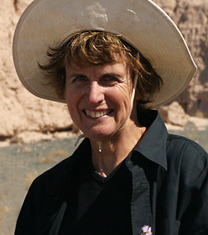
Emmy award winning director Amanda Pope's directing, producing, writing, and editing credits over her more than 20 year long career include documentary, dramatic, and social advocacy programs. Her work has focused on the dynamics of creativity in fine art, public art happenings, urban design, theatre and dance. Her award-winning public television documentaries: Jackson Pollock Portrait, Stages: Houseman Directs Lear, narrated by Jason Robards and Cities for People, narrated by Cloris Leachman have all been broadcast nationally on PBS. Her program series, Faces Of Change, documented grassroots reformers and emerging leaders in seven countries of the former USSR. Most recently she directed The Legend Of Pancho Barnes And The Happy Bottom Riding Club about a pioneer woman aviator. The film was honored with a 2011 Los Angeles Area Emmy in the arts and culture/history category, broadcast over 1200 times on American Public Television for PBS and featured at numerous festivals and screening venues. Amanda has served on the Board of New York Women in Film, the Women in Film Foundation in Los Angeles, and has been a jury member for the National Endowment for the Humanities, the Academy of Motion Picture Arts and Sciences student films, The Humanitas Prize, and the International Documentary Association's feature documentaries. Amanda is a Professor in production at the University of Southern California's School of Cinematic Arts.
TCHAVDAR GEORGIEV
Director, Producer, Writer, Editor
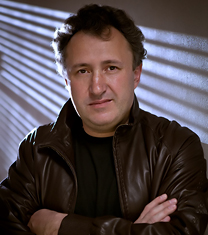
Tchavdar Georgiev is a writer, producer, director and editor who has crafted award-winning films, commercials and television both in the US and abroad.
He directed together with Dana Berry for National Geographic Finding the Next Earth and edited Alien Earths, nominated for a Prime Time Emmy. He was one of the editors on the documentaries We Live in Public (Grand Jury Prize at Sundance) and One Lucky Elephant (Best Doc Editing Award at Woodstock Film Festival) as well as the narrative feature Bastards (MTV Russia Best Film Award). He edited Divining the Human: The Cathedral Tapestries of John Nava, narrated by Edward James Olmos, Marion´s Triumph, narrated by Debra Messing and View from a Grain of Sand (nominated for an IDA award) - all of which premiered on PBS. He was also an editor on the award-winning documentaries Refusenik, Maybe Baby and Holy Warriors. He is currently editing the documentary Valentine Road for Bunim Murray Productions.
He produced the feature thriller Nevsky Prospect for Amazon Studios (a division of Amazon.com) and field produced USA Network’s Covert Affairs “Horse to Water” episode. His field producing credits also include projects for History Channel, Simon Wiesenthal Center, SF1 (Switzerland), Channel 1 and MTV (Russia). He has produced commercials for Adobe, Cisco, NASA and TELE2 Mobile Europe and edited for Honda, Oscar de la Renta, Rooms to Go, TELE2 and MTV Russia. He also directed and produced a permanent multi-media installation on Perestroika for the Museum of Russian Jewish Tolerance in Moscow (the largest Jewish one in Europe).
Tchavdar was awarded an MFA from the USC School of Cinematic Arts and a BFA from the Art Institute of Chicago.
He directed together with Dana Berry for National Geographic Finding the Next Earth and edited Alien Earths, nominated for a Prime Time Emmy. He was one of the editors on the documentaries We Live in Public (Grand Jury Prize at Sundance) and One Lucky Elephant (Best Doc Editing Award at Woodstock Film Festival) as well as the narrative feature Bastards (MTV Russia Best Film Award). He edited Divining the Human: The Cathedral Tapestries of John Nava, narrated by Edward James Olmos, Marion´s Triumph, narrated by Debra Messing and View from a Grain of Sand (nominated for an IDA award) - all of which premiered on PBS. He was also an editor on the award-winning documentaries Refusenik, Maybe Baby and Holy Warriors. He is currently editing the documentary Valentine Road for Bunim Murray Productions.
He produced the feature thriller Nevsky Prospect for Amazon Studios (a division of Amazon.com) and field produced USA Network’s Covert Affairs “Horse to Water” episode. His field producing credits also include projects for History Channel, Simon Wiesenthal Center, SF1 (Switzerland), Channel 1 and MTV (Russia). He has produced commercials for Adobe, Cisco, NASA and TELE2 Mobile Europe and edited for Honda, Oscar de la Renta, Rooms to Go, TELE2 and MTV Russia. He also directed and produced a permanent multi-media installation on Perestroika for the Museum of Russian Jewish Tolerance in Moscow (the largest Jewish one in Europe).
Tchavdar was awarded an MFA from the USC School of Cinematic Arts and a BFA from the Art Institute of Chicago.
ALEXANDER DOLGIN
Cinematographer
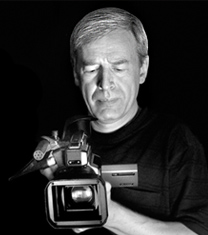
Alexander Dolgin has shot numerous documentary projects for Russian TV as well as PBS, ZDF and ARTE. His work on Moscow Night Music wasawarded best cinematography at the Moscow film festival "Moscow Pegasys" and his work Day and Hour at the Babelsberg Film Festival. He was also honored with the "Courtens D'Or" Award at the 9th Festival of Russian Art and Cinema in Nice for directing the film-opera Einstein & Margarita which also participated in the 31th Moscow Film Festival. Alexander graduated from Moscow State Institute of Cinematography in 1987. He is a member of the Russian Filmmakers Union.
GENNADI BALITSKI
Cinematographer
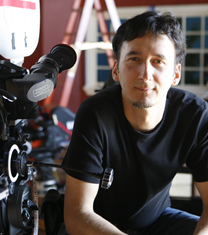
Gennadi Balitski photographed the award-winning Lana's Rain as well as a number of other independent feature films including La Migra, Drive By, Once Upon a Time in the Hood and 29 and Holding. His cinematography in commercials includes work for Oscar de la Renta, Liz Claiborne, Ashley Furniture, Karastan and Rooms To Go. He has also worked as a producer for TELE 2 Europe and MTV Russia. His fashion photography clients include Cindy Crawford.
MIRIAM CUTLER
Composer
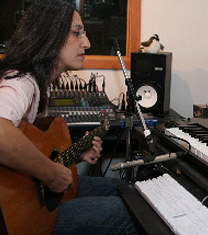
Miriam Cutler is an Emmy nominated composer who has been writing, producing and performing music for over 25 years and has an extensive background scoring for independent film, television and non-fiction. Her documentary credits include: Ghosts of Abu Ghraib, Thin, Family Affair, The Fence, Ethel, Chris and Don: A Love Story, China Blue, Absolute Wilson, Lost In La Mancha, Pandemic: Facing AIDS and many more. Additionally, she has served as an advisor for the Sundance Institute Documentary Composers Lab, as well as on documentary juries for the Sundance Film Festival, Independent Spirit Awards, International Documentary Association Awards, and American Film Institute's Film Festival Awards, and is on the Board of The Society of Composers and Lyricists. She is currently co-producing a documentary about an American elephant, which she will also score.
Director's Statement
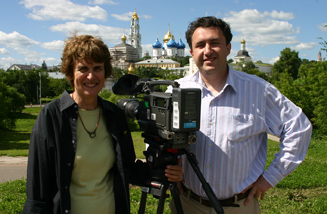
We have both been drawn to stories about stubborn, unsung people with vision who challenge the boundaries of their times. We first met as professor and student at University of Southern California's film school. Our partnership on equal footing across generations might have seemed unlikely. But we complimented each other perfectly. Having grown up in the former USSR, Tchavdar had his roots in Eastern European and Russian culture, while Amanda's strength came from a background in teaching and making documentary films on art and the dynamics of creativity.
What we discovered in the stories surrounding the Savitsky Collection, was a constellation of indomitable idealists. First there were the artists like Yevgeny Lysenko whose blue bull painting Fascism Is Advancing was labeled anti-Soviet. His creativity landed him in a mental hospital. There was the original Collector who defied a totalitarian regime and amassed 40,000 artworks for his museum often by giving IOU's promising payment in 10 or 12 years. And finally we met the current Museum director, Marinika Babanzarova, who has fought off government bureaucrats and art sharks as they tried to raid the prizes of the Collection, and Islamic fundamentalists ready to destroy the art just as they did the great Bamiyan sculptures in Afghanistan.
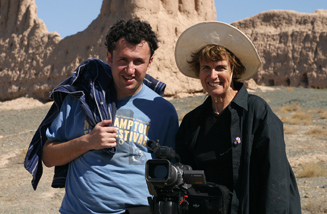
Unfortunately, due to political and economic conditions in Central Asia today, the Savitsky Collection could cease to exist in its present form at any time. We hope this film will function as an advocacy tool and a catalyst to protect this unique 20th century cultural institution.
Amanda Pope & Tchavdar Georgiev
Nukus Museum
Nukus Museum of Art or, in full, The Savitsky Karalkapakstan Art Museum, named after Igor Savitsky, is an art museum located in Nukus, Uzbekistan. Opened in 1966, the museum houses a collection of over 82,000 items, ranging from antiquities from Khorezm to Karakalpak folk art, Uzbek fine art and, uniquely, the second largest collection of Russian Avant-Garde in the world (after the Russian Museum in St. Petersburg). The museum represents the life's work of Igor Savitsky
The museum represents the life's work of Igor Savitsky.
The museum represents the life's work of Igor Savitsky.
Igor Savitsky, Founder
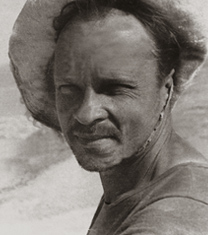
The Russian painter, archeologist and collector, Igor Savitsky, first visited Karakalpakstan in 1950 to participate in the Khorezm Archeological and Ethnographic Expedition and later moved to Nukus, Karakalpakstan's capital, and continued living there until his death in Moscow in 1984. During 1957-66, he assembled an extensive collection of Karakalpak jewellery, carpets, coins, clothing and other artifacts, convinced the authorities of the need for a museum, and, following its establishment, was appointed its curator in 1966.
Thereafter, he began collecting the works of Central Asian artists, including Alexander Volkov, Ural Tansykbayev and Victor Ufimtsev of the Uzbek school, and later those of the Russian avant-garde — including Kliment Redko, Lyubov Popova, Mukhina, Ivan Koudriachov and Robert Falk — whose paintings, although already recognized in Western Europe (especially in France), had been banned in the Soviet Union during Stalin's rule and through the 1960s.
Despite the risk of being denounced as an "enemy of the people", Savitsky sought out proscribed painters and their heirs to collect, archive and display their works; and, with great courage, he managed to assemble thousands of Russian avant-garde and post avant-garde paintings. Moreover, refuting the Socialist Realism school, the collection shook the foundations of that period of art history.
It was not until perestroika in 1985—the year after he died — that Savitsky's remarkable achievements and collections were truly acknowledged, and not until 1991 — when Uzbekistan became independent — that Nukus, a remote 'closed' city during the Soviet Union, became accessible to the outside world.
Thereafter, he began collecting the works of Central Asian artists, including Alexander Volkov, Ural Tansykbayev and Victor Ufimtsev of the Uzbek school, and later those of the Russian avant-garde — including Kliment Redko, Lyubov Popova, Mukhina, Ivan Koudriachov and Robert Falk — whose paintings, although already recognized in Western Europe (especially in France), had been banned in the Soviet Union during Stalin's rule and through the 1960s.
Despite the risk of being denounced as an "enemy of the people", Savitsky sought out proscribed painters and their heirs to collect, archive and display their works; and, with great courage, he managed to assemble thousands of Russian avant-garde and post avant-garde paintings. Moreover, refuting the Socialist Realism school, the collection shook the foundations of that period of art history.
It was not until perestroika in 1985—the year after he died — that Savitsky's remarkable achievements and collections were truly acknowledged, and not until 1991 — when Uzbekistan became independent — that Nukus, a remote 'closed' city during the Soviet Union, became accessible to the outside world.
Marinika Babanazorova - Director and Curator
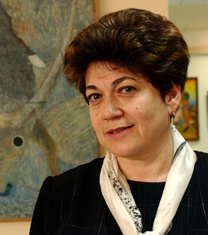
In her twenty-five year career as the Director of the Museum, Marinika Babanazarova has been involved in the presentation of more than 20 exhibitions, including shows in France, Germany, and around the former Soviet Union. Her articles have been featured in five of the exhibition catalogues, including the best seller of the year Avantgard, Ostanovlennyi na Begu (Avant-Garde Stopped on the Run). In 2006, she was honored as a University of Southern California Provost's Distinguished Visitor. Ms. Babanazarova has studied at the Louvre and the British Museum, and participated in numerous international conferences on the cultural and artistic traditions of Central Asia. She received her degree in Art History from the Tashkent Art Institute in 1990. She was a member of the Karakalpak parliament from 1995-1999, and is a member of the Central Elections committee of the Republic of Uzbekistan.
Friends of Nukus Museum
Set up initially in Tashkent as an informal group during the early 1990s and later registered in Karakalpakstan as a non-governmental organization (NGO) in 2001, the Friends of Nukus Museum (FoNM) is a small, but dedicated international network of advocates and supporters. In 2007, it was re-constituted as the Friends of Nukus Museum Foundation, a Dutch registered charity. The FoNM works with the Museum's Director on a range of practical issues, such as development of the Museum's long-term development strategy, liaising with donors and other museums to exhibit the Collection abroad, even down to the more mundane, but very essential, translation assistance and marketing advice.
Credit
WRITTEN, PRODUCED AND DIRECTED BY Amanda Pope Tchavdar Georgiev IGOR SAVITSKY'S VOICE BY Ben Kingsley ARTISTS' VOICES BY Sally Field Ed Asner Igor Paramonov EDITED BY Tchavdar Georgiev SCORE COMPOSED AND PRODUCED BY Miriam Cutler CINEMATOGRAPHY Alexander Dolgin Gennadi Balitski ASSOCIATE PRODUCER AND RESEARCHER Etery Sakontikova RESEARCHER Ekaterina Sakontikova SOUND RECORDIST Adam King SOUND DESIGN BY Joe Dzuban Raj Patil SOUND RE-RECORDING MIXER Joe Dzuban TITLE & MOTION GRAPHICDESIGN BY inMotion Studios PRODUCER Stephen Fromkin DESIGNER & ANIMATOR Harold De Jesus ANIMATOR Marcel Valcarce COLORIST Brian Hutchings DIGITAL CONSULTANT Matt Radecki STORY CONSULTANTs Miriam Cutler Lisa Leeman Kate Amend Mark Harris INDEPENDENT FILM CONSULTANT Robert Hawk ADDITIONAL CINEMATOGRAPHY John Ealer Chad Wilson Clay Westervelt Daniel Pfisterer Erick Green ADDITIONAL GAFFER Jim Andre Emily Topper ADDITIONAL SOUND Valery Ermakov Gentry Smith TRANSLATORS AND TRANSCRIBERS Yuliya Volkhonovych Dimitriy Barabanov Adele de Ruocco Katya Kudriavtseva Oleg Minin John Narins Elena Vassilieva Yvonee Foong Cabell Smith Stephanie Young PRODUCTION ASSISTANTS Jason Barbagelott Paolo Borraccetti Andrejs Kovalovs ASSISTANT EDITORS Andrejs Kovalovs Yasmin Assemi Justin Kelley Matt Rittorno ADDITIONAL GRAPHICS Andrejs Kovalovs ARCHIVAL STILLS ENHANCEMENT Alexander Dolgin PRODUCTION STILLS Ernest Kurtveliev THANKS TO ALL THOSE WHO APPEAR IN THE FILM: Marinika Babanazarova Olga Belenikina John Bowlt Sergei and Alla Efuni Lidia Iovleva Kalibek Kamalov Alexei Kandinsky Stephen Kinzer Irina Korovay Jildasbek Kuttimuratov Andrei Sarabianov Alvina Schpade Alexander Tereshenko Lubov Truskova Alexander Volkov Maria Volkov Valery Volkov Militza Zemskaya AND THANKS TO THOSE WHO GENEROUSLY PARTICIPATED, BUT ARE NOT IN THE FINAL FILM: Natalia Adaskina Dinara Babanazarova Nazira Babanazarova Sergei Khrushchev David Pearce Nancy Perloff Aigul Pirnazarova Irina Pronina Damir Ruzibaev Elizabeth Sanasarian Alexandra Shatskikh Valentina Sychova Svetlana Turutina Andrei Volkov Vadim Yagodin PAINTINGS, ARCHIVAL FILM & PHOTOGRAPHS AP Archive Archive of the Repressed Victims of the former Soviet Union in Uzbekistan Corbismotion Getty Images Max Penson Collection, courtesy of Maxime Penson Mosfilm Cinema Concern Museum of the People of the East Russian Archive of Documentary Films & Photographs Russian State Archive of Literature and Art Smithsonian Institution The State Russian Museum The State Tretyakov Gallery The Wende Museum Ural Tansykbaev Memorial Museum Uzteleradio Volkov and Rybnikov families Marc Chagall, "The Soldier Drinks" courtesy Solomon R. Guggenheim Museum, New York, Solomon R. Guggenheim Founding Collection, by gift Paul Gauguin, "In the Vanilla Grove, Man and Horse" courtesy Solomon R. Guggenheim Museum, New York, Thannhauser Collection, Gift, Justin K. Thannhauser Paul Gauguin, "Self-Portrait" courtesy of Musee d'Orsay, Paris, France, Photo Credit: Scala/Art Resource, NY Paul Gauguin, "Where Do We Come From? What Are We? Where Are We Going?" courtesy of the Museum of Fine Arts, Boston, MA. Tompkins Collection — Arthur Gordon Thompkins Fund Vincent van Gogh, "Landscape with Snow" courtesy Solomon R. Guggenheim Museum, New York, Thannhauser Collection, Gift, Hilde Thannhauser Natalia Goncharova, "Harvest" courtesy of the Omsk District Museum of Visual Arts, Russia Natalia Goncharova,"St. Michael the Archistrategus" from her series 'Mystical Images of War' courtesy of the Research Library, The Getty Research Institute, Los Angeles, CA Wassily Kandinsky, "All Saints" courtesy of the Stadtische Galerie im Lenbachhaus, Munich, Germany Mark Y. Kaplan, "V.I. Lenin in 1917" courtesy of The Wende Museum, Los Angeles, CA Mikhail A. Kostin, "In the Stalin Factory" courtesy, Friend of the Springville Museum of Art, Springville, Utah Georges Seurat, "The Morning Walk" courtesy of The National Gallery, London/Art Resource, NY Alexander N. Volkov, "Hoeing of the Field," State Russian Museum, St. Petersburg ALL ARTWORKS NOT OTHERWISE CREDITED COME FROM THE SAVITSKY COLLECTION AT THE KARAKALPAKSTAN STATE ART MUSEUM MUSIC CREDITS Yussi - balalaika, mandolaika, octave mandolin, mandolin Yuval Ron - cumbus, saz, oud Stephanie Bennett - harp Charlie Adelphia - ney, duduk, various ethnic flutes, tsorna Max Baxter - woodwinds, saxes Nicholas Ariondo - accordion (courtesy ACCO-Music) Louis Durra - piano Carl Sealove - bass Paso Doble - strings MB Gordy - dhol, doyra, tombek, dumbek, phase shakers, riq, spanish tambourine, daf Score Orchestrated by Desha Dunnahoe Score Recorded and Mixed by Les Brockmann "Soky Nomay Bayat/Ufary Bayst" and "Rohat (Pleasure)" field recordings by Deben Bhattacharya, taken from the album "The Music of Uzbekistan" EUCD 1805 Courtesy of ARC Music Productions International Ltd. EQUIPMENT Alternative Rentals Coffey Sound Constant Change Picture Vehicles Edgewise Media Hollywood Bob's Movie Cars Ragtime Rentals USC SCA Wooden Nickel PROPS Art Wave Stalin Painting & Russian license plate — Philip Jones Textiles courtesy of Cheri Hunter (Textiles shown in this film were lawfully obtained outside Uzbekistan.) The Wende Museum Warner Brothers Studios Property Dept USC Roski School of Art ACCOUNTING Larry Ganzer, Stephanie Truex (The Allegent Group) POST PRODUCTION SERVICES Silhouette Films Different by Design ADDITIONAL POST PRODUCTION SERVICES VPTV England Todd-AO West Bruce Hanifan Productions Disney Studios USC School of Cinematic Arts Advanced Digital Services, Inc. MG Digital NON-PROFIT PARTNER International Documentary Association SPECIAL THANKS Jonathan Ahdout Konstantin Akinsha Steve Albrezzi Robert Alderette Jan Aldrin Chris Andrews Erik Bertellotti Mitchell Block Lisa Blok Doug Blush Fritzie Brown Ann Burchell Chris Cain Chris Callister Sung Rok Choi Don and Marilyn Conlan Midge Costin Ian Crozier Roozbah Dadvand Dean Elizabeth Daley Carole Dean A.J. Dickerson Richard Dion Alicia Dwyer Dave Florek Eric Furie Elena Gasparova Beata, Boris, Arielle Georgiev Bella, Georgi & Emil Georgiev Yana Gorskaya Greg & Kathy Guroff Philip Jones Amy Halpin Bruce Hanifan A.A. Dr. Hathout Silke Hilger Fiona Hill Darrin Holender Selma Holo Richard Hyland Judy Irola Candice Jacobs Justin Jampol Ludmila Kan Andy Kay Zubeida Khan Naim Karimov Ed Kasinec Gail Kearns Susan Kechekian Marsha Kinder Mark Konecny Yelena Kravtsova Roger Lane Greg Lanesey Eugene Lazarev Ari Levinson Phil Linson Sally Long-Innes Jason Martinez Heidi McCormack Bob McRae Murad Megalli Tom Miller Trevor Norris Carlos Ortega Penny Paine David Pearce German Pinchevsky Zazi Pope & Jack Cairl Hon. Joseph Presel Yelena Rachitsky Ruth Rauch Thomas Roberdeau Elena Romanova Azade-Ayse Rorlich Sandra Ruch Stan Rosen Hon. Sodyq Safaev Elizabeth Sanasarian Carolyn See Marat Seidanov Simone Sheffield Roman and Yana Shukman Jerry Sicherman Michael Silton Cabell Smith & Einstein the dog Mary Smith Ann-Elizabeth Sobieski Marcelo Sotenberg Nick Spark Alan Starbuck Susan Steiner Jane Stewart Tokhir Sultanov David Tlapek John Tower Michael Trainor Robbie Tucker Greg Vannoy Joe Wallenstein Jennifer Warren Morrie Warshawski Rosamond Westmoreland Thomas Whiting Dick Wirth Monique Zavistovski FUNDING PROVIDED BY THE FOLLOWING FOUNDATIONS, INSTITUTIONS AND INDIVIDUALS: National Endowment for the Arts Open Society Institute SahanDaywi Foundation USC Zumberge Research Grant USC Provost's Distinguished Visitors Program USC School of Cinematic Arts Lois M. O'Brien M.D. Shelley & Donald Rubin Foundation CEC Artslink Center for Jewish Culture and Creativity The Cynthia Lasker Foundation Sarah Carey Roy W. Dean Award Ellen Katzman Patricia Finkel Rosalie Kornblau WITH THANKS FOR THEIR GENEROUS SUPPORT Friends of the Nukus Museum 'Jahon' Information Agency at the Foreign Ministry of Uzbekistan Institute of Modern Russian Culture, USC Oak Park Public Library, Chicago The Eurasia Foundation The Foundation for International Arts and Education The Ministry of Culture and Sports of Karakalpakstan The Ministry of Culture and Sports of Uzbekistan The Savitsky Collection at the Karakalpakstan State Art Museum Women's Luncheon Group Igor Savitsky's words are based on his writings and recollections of those who knew him. Shot on location in Russia, Uzbekistan and the United States In memoriam of John Rauch and Svetlana Turutina










